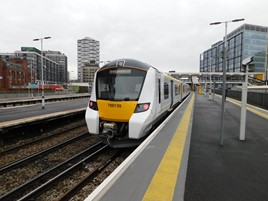Passenger numbers for 2018-2019 quarter 2 (Q2) rose by 1.9% compared with the same period last year according to Office of Rail and Road (ORR) figures published on December 13.
It meant 434 million passengers travelled between July and September last year, with 1.73 billion passengers travelling between September 2017 and September 2018.
The increase for Q2 was driven by a 3.1% increase in the London and South East sector, the ORR said. The Long Distance and Regional sectors reported declines of 0.8% and 0.7% respectively.
Journeys using tickets such as advance, anytime and off-peak rose 9m in Q2 compared with the same period in 2017, while the number of season ticket journeys fell in the same period to 143m. This was the lowest since 2010/11 Q2 and the ORR says suggests passengers are continuing their move away from longer-term tickets. It was the ninth successive quarter that they have fallen.
Passenger-kilometres increased 1.4% in 2018-2019 Q2 compared with 2017-2018 Q2, although only the London and South East sector reported a growth (3.8%).
Passenger revenue was up 5.4% in 2018-2019 Q2 compared with the same period, and ORR suggests that this also shows the switch from season tickets, which it says offers the lowest price per journey.
The operator with the most passenger journeys in 2018-2019 Q2 was Govia Thameslink Railway (GTR) with 83.7m journeys, a 5.6% increase on the same period as last year. Least used was Caledonian Sleeper with 0.1m, a rise or 3%.
TfL Rail passenger numbers rose the highest (21.1%) to 13.0m, after it took over the Heathrow Connect services between London Paddington and Heathrow Airport, while Great Western Railway experienced the biggest decline, with a 6.0% drop compared with the same period last year, meaning it carried 25.0m passengers. The ORR put the drop down to the transfer of services to TfL Rail, as well as the ongoing infrastructure work on the route.
Open access operators recorded their highest Q2 growth since 2015-2016. The regulator says the 0.4m journeys on Grand Central was the highest quarterly volume since the time series began in 2011-2012.
-
For the FULL story, read RAIL 869, published on January 2, and available digitally on Android, iPad and Kindle from December 29.
















Login to comment
Comments
No comments have been made yet.